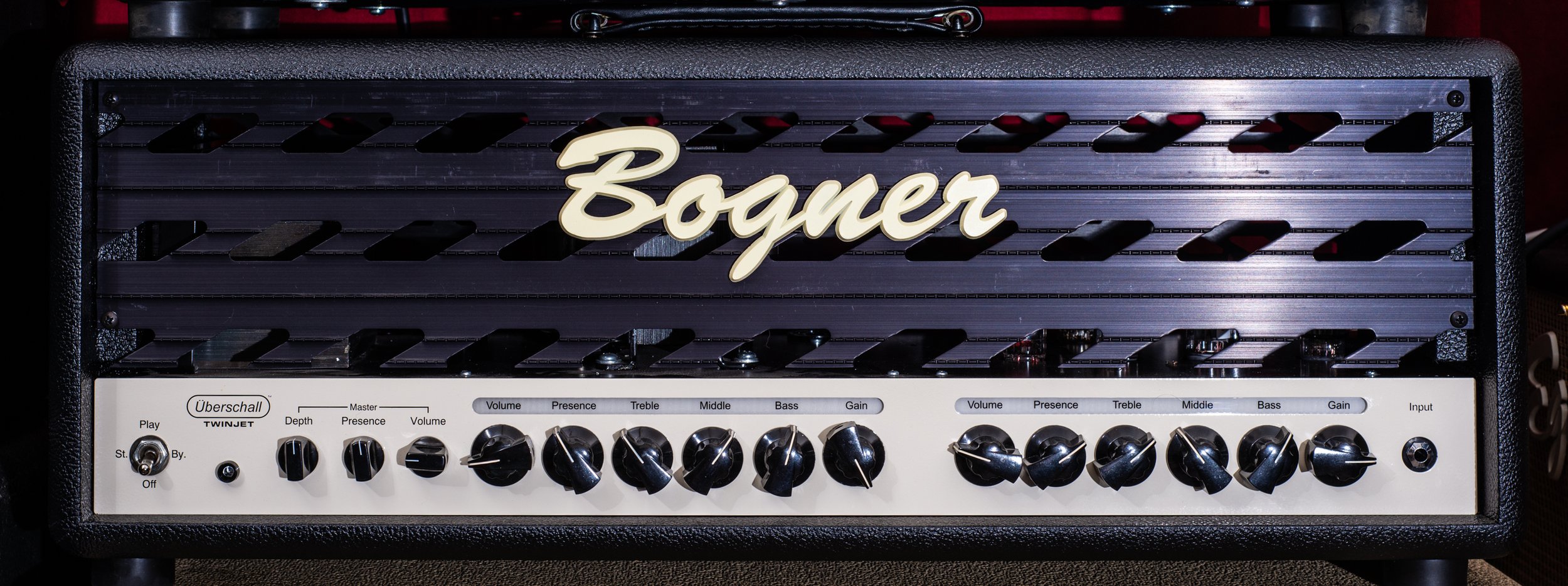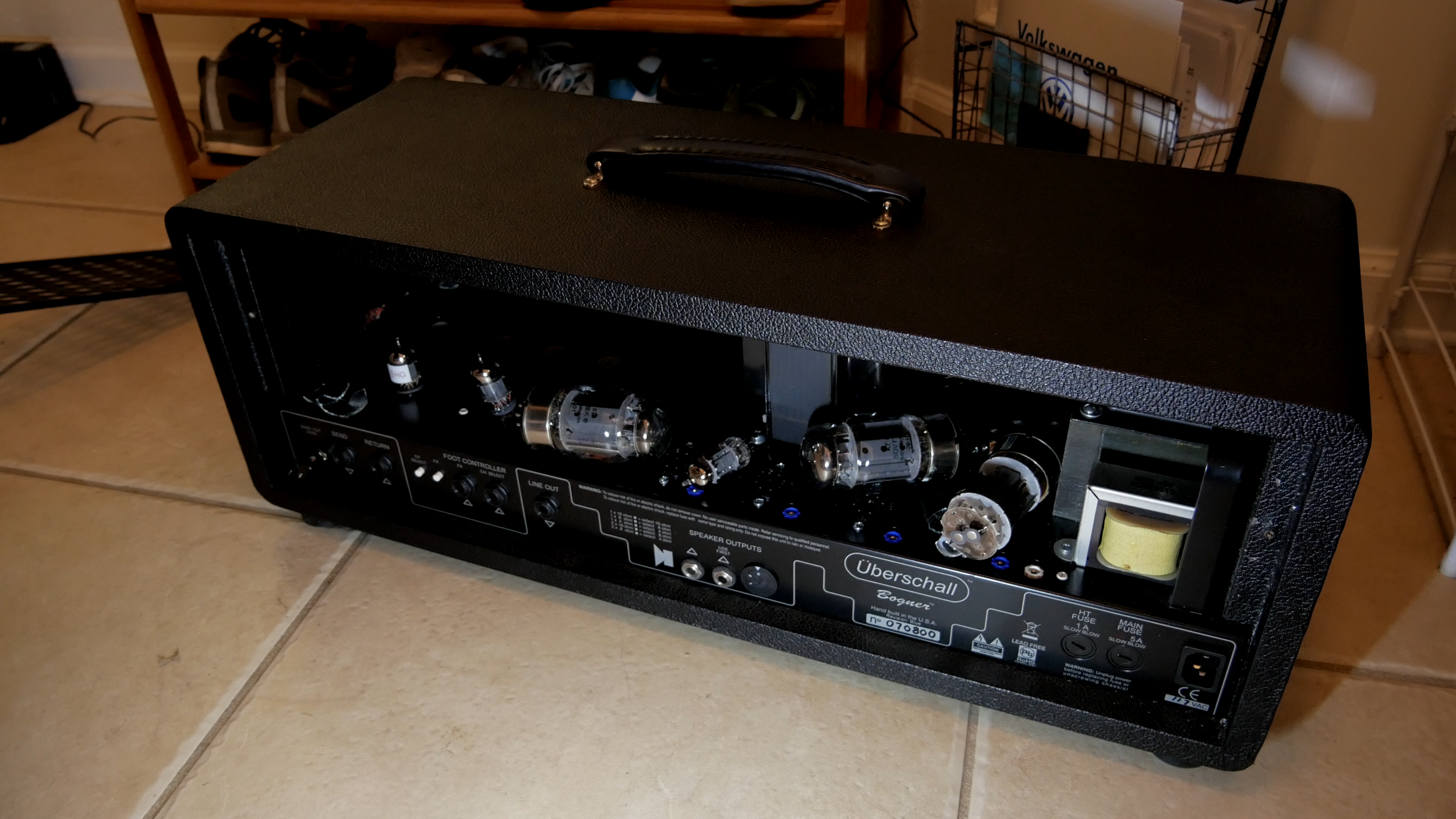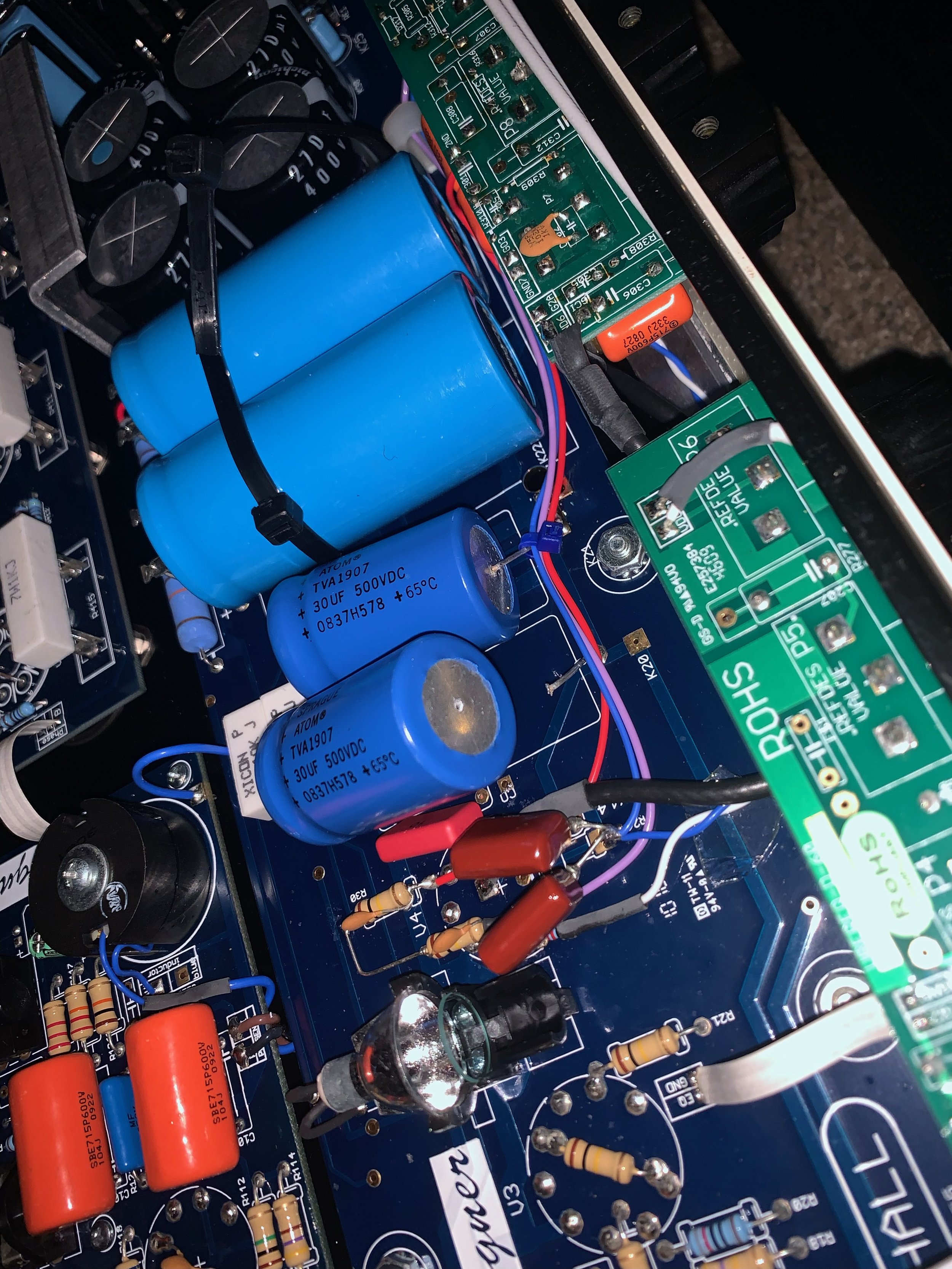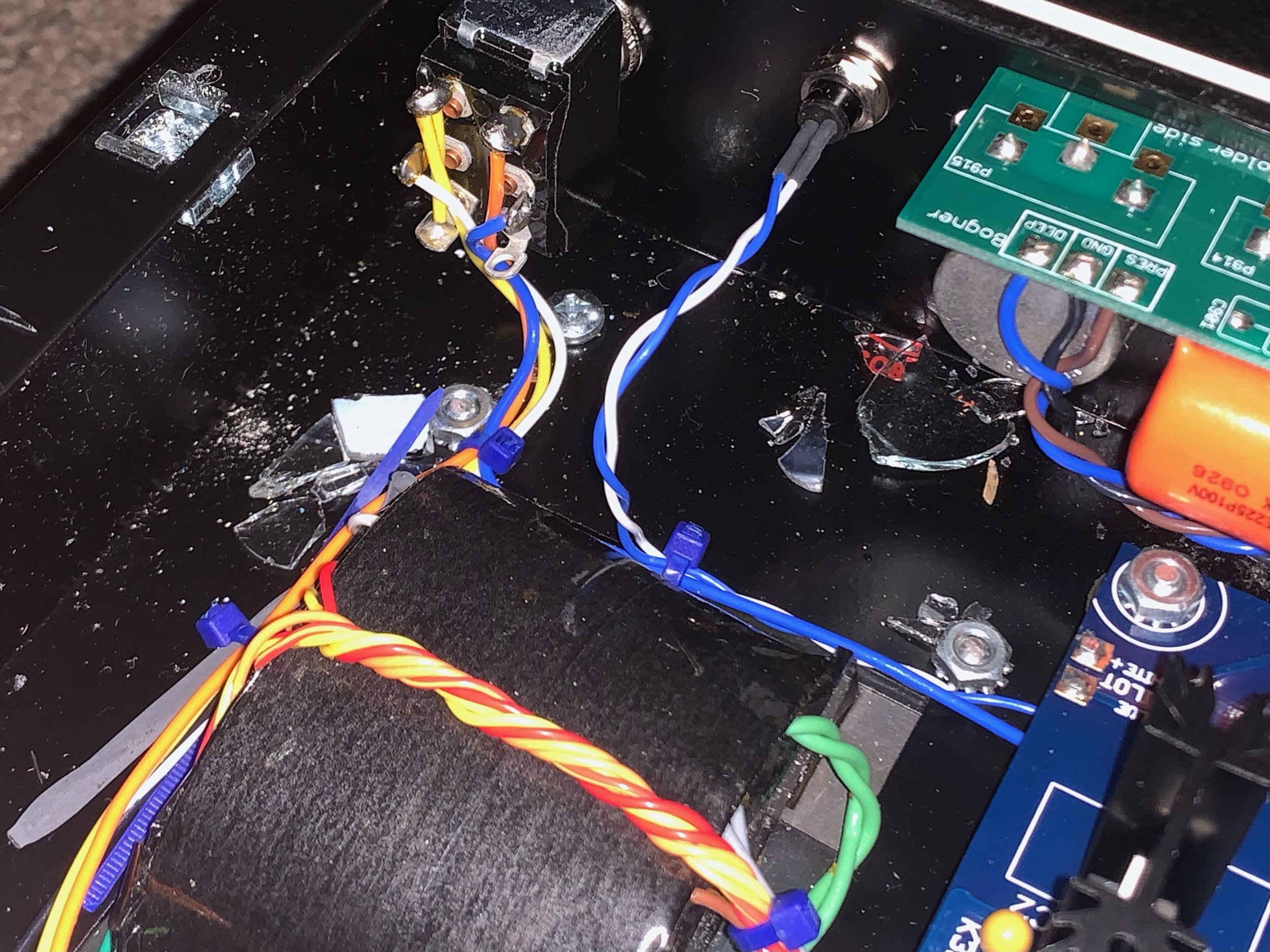My collection of Oranges is ever growing, and this is an amp I played once over ten years ago that stuck with me for years. I kept turning my nose up at the increasing prices, and finally I was able to grab one for a good deal.
This amp shouldn’t be confused with the Rockerverb series amps. Those amps are fixed bias, class AB amplifiers with 4 gain stages on the lead channel, and an clean channel with 2 stages and an EQ, plus spring reverb. I have a Rockerverb Mk III, which has EL34’s (same as Mk II), but Mk I Rockerverbs had a very unique 4x 6V6 tube configuration.
This Rocker 30 however is quite different. It is a cathode biased amp with a class A power section (well, as “Class A” as any guitar amp gets), with very few bells and whistles. No effects loop, no reverb, and the clean channel is actually just a single gain stage with a volume control - no EQ circuit whatsoever. Of course, no EQ circuit on the Natural channel, with the Class A EL34 power section, means it gets plenty loud.
The Dirty channel has a lot of gain on tap, but it’s a very classic sound. Much closer to a classic Orange than the Rockerverb’s more modern, tighter tone. With the gain set in the middle areas, it nails old school rock tones with solid low end thump. The cathode bias gives a unique texture to the gain tones, with lots of harmonic overtones increasing the fullness of the sound quite a bit. I’m really enjoying playing it and comparing it with my AD30, which has a similar power section but a much different gain structure and a tube rectifier. This is definitely an amp I want to talk about in a video, since the circuit is unique for an amp of this gain level and it has a really great tone to boot, and I want to do some comparisons to the classic sounds you can get from the OR50 and AD30.














